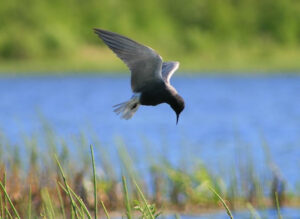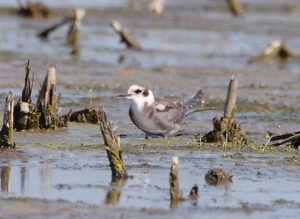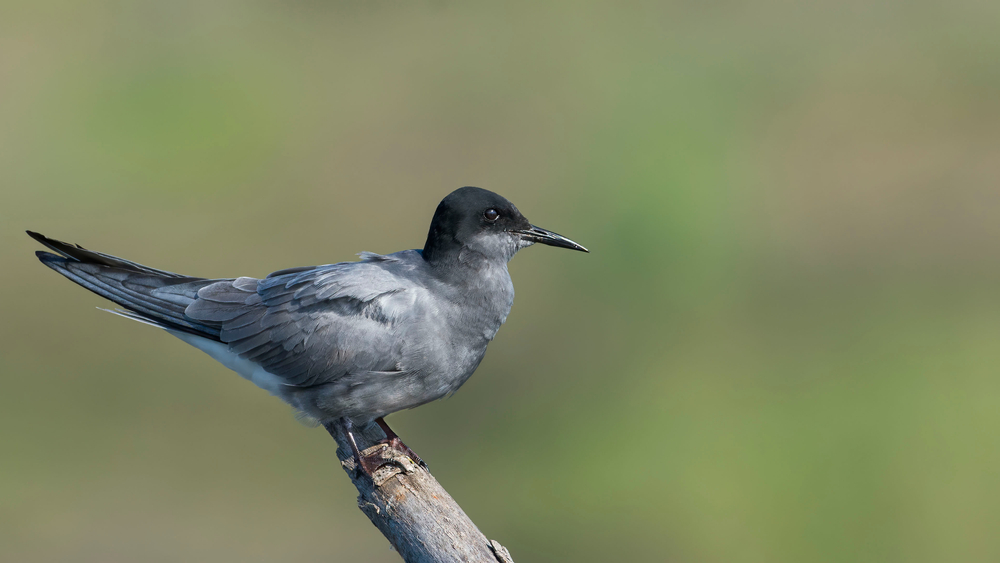Black Tern, Chlidonias niger
Bill Rowe
Of all the birds you can see around our rivers, lakes, and marshes, there is nothing more striking than a Black Tern in breeding plumage, swooping gracefully over the water surface to pick off insects. Now solely a migrant, the Black Tern was once a breeding bird in the marshes of Missouri, but it had become rare even by the turn of the twentieth century, according to Otto Widmann in his Preliminary Catalog of the Birds of Missouri (1907), the first careful and complete study of our state’s birds. The last known nestings in Missouri occurred near St. Louis, at Marais Temps Clair in 1940 and 1950. While Black Terns are still fairly common in the northern U.S. and several Canadian provinces, their numbers have declined, probably for a combination of reasons that include loss of wetland habitat; and the same is true in many parts of their wide range in Europe and Asia. Unlike most terns, which nest on sandy shores or rocky islands, these birds build their nests in marshes or lake edges, on mats of vegetation like reeds and rushes that cover part of the shallow water. Their habitat changes in the winter, when they head for the Pacific and Caribbean coasts of Central and South America; there they may actually remain at sea for long periods. In between, on migration, they will show up on any kind of wetland, often feeding as they go and passing through rapidly, here one hour and gone the next.
IDENTIFICATION: Our second-smallest tern, not much larger than a Least Tern. Breeding-plumaged birds are unmistakable. Juveniles and non-breeding adults are white below with a partially dark head, as if they were wearing headphones; their back and wings remain the same medium gray color, darker than our other terns. In these plumages they aren’t as obvious, but they still don’t look like anything else in North America. An Old-World relative, the White-winged Tern, is illustrated in field guides as a vagrant to this continent, but it hasn’t yet been spotted in Missouri.
ST. LOUIS STATUS: A fairly common migrant in both directions. Northbound birds can be seen through May and well into June; then there is a period of just a few weeks before the first flocks of southbound birds arrive, usually mid-July, on the same schedule as some of the shorebirds. They will continue to appear through September, but only rarely into October. Definitely a warm-weather bird!
Learn more and listen to the calls of Black Terns here.


Breeding-plumaged adult in flight
Juvenile
Photo Credit: Al Smith




